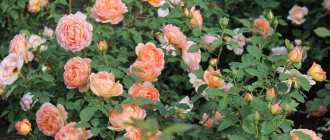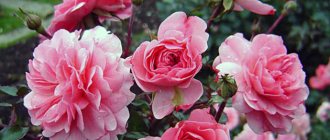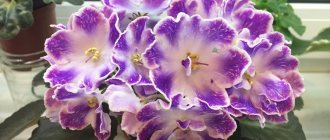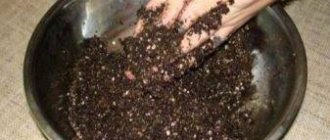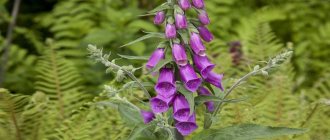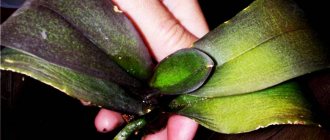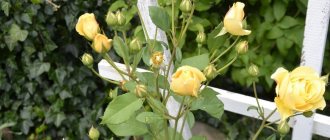Reviews
Irina Smirnova
February 17, 2019
Several years ago I heard a lot of positive reviews about this rose; at that time, what attracted me most was the very abundant flowering, from the end of spring until the onset of the first frost. However, I needed the plant to be able to withstand a fairly cold winter, sometimes down to minus 30 degrees. Finally, I decided to try planting Amber Queen, I was not mistaken and did not regret it.
Roses turned out to be resistant to disease, frost and drought. The plant is a little less than 2 years old. At the end of the winter period we were again pleased with abundant flowering.
We water rarely, 2-3 times a week, but quite abundantly.
Before flowering, the bud is elongated and long. The blossoming flower resembles a lemon-colored hat. But the aroma is sweet, medium in distribution.
Flowers are located along the fence, where there is bright sun before lunch and shade in the afternoon.
The plants also proved to be resistant to weather conditions. The petals do not fall off during rain and hail. Although some of the flowers are covered by fruit and berry trees.
Tell me, do you treat it preventatively against diseases? If yes, then with what and when?
For example, I don’t carry out prevention. I process only when there are diseases and pests. Regarding the latter, it’s mostly spring!
Yana Lisowa
October 16, 2019
Thank you for your answer, I’m used to processing most roses, but recently I’ve been thinking about the advisability of this for some varieties
Katya Markina-Komarova
July 2, 2019
An incredibly beautiful rose, I want to plant one like this on my property.
Yana Lisowa
February 6, 2020
It will definitely decorate the area: the bush is neat, not bulky, and there are bright flowers)
I absolutely agree with you - the rose is a hard worker, what a hard worker to look for! The bush is compact, not a “horse”, dense, healthy and always in bloom!
And when it blooms, such a bright spot in the form of this bush appears on the site, you immediately pay attention to it
Irina Smirnova
February 11, 2019
I really remember this name and the flower itself. Our relatives grew such roses on the Black Sea coast.
They bloomed quite often and had a pleasant aroma.
Since this is the south, I think they are quite resistant to drought and scorching sun. Although we grew up near a vineyard in the shade.
Yana Lisowa
February 6, 2020
I also didn’t dare plant in the open sun, I was afraid that the buds would be faded(
autorenew
Load more varieties
Queen Elizabeth
Rose Queen Elizabeth: the queen of the garden
Queen Elizabeth (Queen of England, The Queen Elizabeth Rose, rose Queen Elizabeth) according to the classification of roses belongs to the Grandiflora group. This rose is considered the ancestor of roses in this group. Bred in 1954 in the USA by Walter Lammerts and named after Queen Elizabeth II, who inherited the English throne in 1952.
Rose Queen Elizabeth description
The rose reaches a height of 100-250 cm and a width of 100 cm.
USDA: Zone Six.
The bush is narrow and erect, thanks to which, despite its height, it can occupy a relatively small space. The shoots are thick, strong, with large thorns. The foliage is large, dark, round, leathery, shiny, relatively resistant to disease. Very beautiful young foliage (purple). In some regions, rust may occur, but otherwise the rose is quite resistant to disease.
The buds of the Queen Elizabeth rose are light red, elongated, then gradually turn pink as they bloom. The flowers are delicate pink, not very double, with darker undersides of the petals.
In temperate climates they hold color well; in hot climates they fade to a soft pink. The outer petals bend down and are slightly wavy.
The flowers are first goblet-shaped, the fully opened flower is quite flat.
Flowering is repeated, abundant, almost continuous. The aroma is moderate, sweet.
Rose Queen of England Growing
Rose Queen of England is absolutely not demanding, ideal for beginners. With a minimum of care - maximum impact. Such roses are already grateful that you planted them in your garden.
It also grows well in poor soils. But if possible, it is better to choose loose, humus-rich soil with good air and moisture permeability that prevents moisture stagnation.
The sunny place you choose, the more abundantly the rose blooms.
It propagates well by cuttings; self-rooted bushes are more compact.
Rose Queen Elizabeth Planting and care
Planting Queen Elizabeth roses is no different in principle from the methods of planting roses of other groups.
This rose responds very quickly and positively to spring feeding. It begins to bloom from June to October, sometimes even leaving flowers in winter.
Important
You should remove faded flowers in time, then new ones will quickly appear in their place. Very often, a rose tolerates winter well even with little shelter. If it freezes, it grows back very quickly.
Resistant to diseases and pests. Otherwise, caring for the rose is as usual as for all other roses.
Using the Queen Elizabeth rose
Rose Queen Elizabeth can be placed in the center of the flowerbed, used as a tall accent, and can be surrounded by low-growing roses or perennial herbaceous plants. If the flower garden is large, you can place from three to five bushes in the center.
If you do not plant the base of the roses in the flowerbed with annuals, then try to prune the rose in steps so as not to completely expose the bush at the base.
In discounts, use the rose as a background design or as a bright mid-ground accent.
This rose can easily create a hedge; to do this, plant it at a distance of 45 cm from each other.
Rose Queen Elizabeth Partners
When choosing neighbors for this rose, you need to remember about its pink flowers, and select the color scheme and plant types to match this color.
The rose harmonizes well with plants with blue-violet flowers: delphinium, bluebells, meadow geranium.
Flowers of a more intense blue-violet hue are suitable: oak sage and long-leaved speedwell. The rose looks good against the background of purple clematis.
Advice
Plants with silvery foliage, such as Byzantine chistets, Fassin's catnip, gypsophila or monarda, are good next to this rose.
Plants with white flowers are good neighbors for this rose.
Awards
Throughout its history, the Queen Elizabeth rose has gained worldwide fame and
1954 - Gold medal, Portland (English), USA.
1955 - Gold Medal of the British Royal Rose Society (English).
1955 - Award from the All American Rose Breeders' Society (AARS).
1955 - President's International Trophy, British Royal Rose Society (RNRS), UK.
1957 - Gertrude M. Hubbard Gold Medal, American Rose Society (ARS), USA.
1957 - Gold medal, The Hague, Netherlands.
1960 - Gold medal of the American Rose Society, USA.
1979 - “The most beloved rose in the world” (French), inducted into the Hall of Fame of the World Federation of Rose Societies (WFRS).
1999 - Queen of the Show, CRS, Huronia Rose Society, Canada.
1999 - Best Grandiflora, CRS, Huronia Rose Society, Canada.
2000 - Court of Show/Honor Prize, Lower Cape Rose Society, USA.
Description of the Amber Queen variety
The beautiful Amber Queen is the most abundantly flowering floribunda of the 20th century, Harkness, Great Britain, 1983. Its spreading bushes with glossy foliage of original color (at first bronze, later dark green) are covered with flowers from early summer until late autumn.
This rose is loved and appreciated everywhere, but it is especially beautiful in the northern regions, where the unusual changeable color of its flowers is revealed in its entirety. Amber-apricot, depending on the air temperature, weather, more or fewer sunny days a year, they can turn light yellow or deep pink with a subtle golden tint.
Compared to floribundas of other varieties, its cup-shaped flowers are quite large - up to 8 centimeters in diameter. They are collected in real bouquets of 5-7 pieces, and the very first flower to bloom is the largest and densest. The aroma is quite strong, but very pleasant.
Benefits of floribunda Amber Queen
- It is one of the first to bloom and ends flowering with the arrival of frost.
- Very abundant flowering.
- Resistant to rose diseases.
- Grows remarkably well in the middle zone.
- It practically does not freeze. USDA: Zone Six.
Features of agricultural technology
In order for the Amber Queen rose to reveal its best qualities, you need to carefully consider where to plant it. It grows well in sunny areas, but the flowers will be noticeably smaller than in open partial shade.
In an open place blown by strong winds, the luxurious clusters of its flowers will droop. In lowlands, where the soil remains wet for a long time after rains, the roots of the rose will rot. In addition, high humidity provokes the development of black spotting and powdery mildew. These diseases are not terrible for a healthy bush of this variety, but for a weakened one they are destructive.
Based on all that has been said above, we can conclude: for the Amber Queen rose, an area shaded during the day at some elevation, protected from the wind by the wall of a house or several trees and shrubs, is ideal.
Plant floribundas in a deep planting hole, so that the root collar is underground. The best soil for it will be one that has a slightly acidic reaction.
You need to water the rose infrequently (once every 10 days), but abundantly: 10 liters of warm water per bush. Feed in the same way as other roses, avoiding haphazard nitrogen fertilizing, especially in the autumn.
The ideal partner for Amber Queen would be a Westerland rose - equally bright and changeable. Together they can decorate any flowerbed, turning a modest patio into a fairy-tale garden.
Advantages of the variety
Rose Amber Queen has a number of advantages that make it one of the most popular plants for growing in the middle zone.
These include:
- Attractive appearance.
- Relatively high frost resistance.
- Disease resistance.
- Long flowering period.
- Unpretentiousness.
The only disadvantage of this variety is the need to carefully choose a place to plant a rose bush.
By observing all the care requirements, you can grow a spectacular flower garden.
Rose Amber Queen is a blooming beauty. This is exactly the bush that should be grown at home in a flower bed, making it the central element. The unusual amber-hued petals of a lushly flowering bush, buried in dense dark green foliage, look stunning. Interestingly, the flowers emit a scent with a subtle lemon note, and for some, this aroma is similar to bergamot.
Growing a flower
Rose Amber Queen is successfully grown in open ground. In order for its natural abilities to develop, flower stalks to remain strong and fruitful, it is necessary to comply with the rules of planting, care, and conservation during the wintering period.
Amber Queen rose seedlings
In what form is planting carried out?
At the end of flowering, roses produce fruits that contain seeds. They become a means of reproduction that is easily and simply obtained. But you can prolong the genus of plants with the help of seedlings.
Note! It is better to plant in the spring, although autumn planting before the onset of stable cold weather is also allowed.
Selecting a location
Site selection is of particular importance. Plants should not be planted in a windy area. Plantings should be placed on the sunny side, illuminated in the morning or evening, so that the rose petals do not get burned.
Important! Lowland areas are not suitable for growing roses.
How to prepare the soil for planting
Roses prefer black soil. They also grow well on loam, but such soil must first be provided with organic matter. The depth of groundwater is important (at least 1 m is suitable). The growth and quality of flowering are affected by the acidity of the soil (pH 6.0 to 6.5). The soil can be acidified by adding manure or peat. Excess acid can be removed by adding ash or lime.
Step by step landing procedure
Instructions on how to properly plant rose seedlings:
- Prepare a hole for planting about 60 cm deep.
- Place a 10 cm layer of small pebbles, crushed stone or gravel at the bottom of the hole as drainage.
- Add a layer (10 cm) of organic fertilizer in the form of rotted manure or compost. In this case, it is recommended to mix the manure with a layer of fertile soil.
- Garden soil is poured on top in the shape of a dome 10 cm high.
- An aqueous infusion is prepared in the form of a mash from clay soil.
- The roots of the seedlings are immersed in the resulting infusion for some time.
- The roots are straightened, and the bush is immersed in the prepared hole so that the rhizome goes underground, and along with it the root collar.
- The roots are covered with soil, the soil is compacted around the cutting.
- Watering is in progress.
- The soil around the seedling should be mulched with peat.
A bright celebration of color and beauty
Rules for planting and care
Rosa Ali Baba (Alibaba)
Growing a rose is not difficult if you choose the right place. Roses, regardless of variety, require a lot of sunlight. The grower will have to try to find an area that will be illuminated for 6-8 or more hours a day.
Please note that the Amber Queen rose needs well-draining soil. If the garden owner is not sure that the soil he has prepared for this flower is of high quality, it will not hurt him to stock up on a purchased soil mixture intended for roses.
How exactly you should prepare an Amber Queen rose for planting in a flowerbed depends on the form in which it was purchased:
- If the seedling was sold in a container, it means that the root system of the plant has already formed and, perhaps, the rose bush will bloom immediately after planting, in the same year. It is enough to dig a hole, the caliber of which is twice the diameter of the container, and the depth corresponds to the height of the container.
- If the rose rhizome was purchased online and delivered by mail, planting the plant in open ground must be preceded by preparatory work.
Preparing and planting the root system
First, the root is immersed in a bucket of water at room temperature and left overnight. In the morning, dig a hole, the width and depth of which corresponds to the size of the rhizome, and the bud bud should be located 2.5 cm below ground level.
Seedling
Having straightened the roots inside the hole, fill the hole halfway with soil. Then, taking a garden hose in your hands, intensively water the loosened soil until it settles on the rhizome in the form of dirt. At the next stage, the hole is completely filled with soil. This method eliminates the formation of air pockets around the root system of the plant.
Caring for the Amber Queen rose is quite simple. If the gardener already has experience in growing roses, caring for this crop will not cause him any trouble. First of all, the plant needs sufficient moisture and nutrients. For most climates, care involves weekly deep watering.
Additional Information! Flower growers living in hot or dry regions water their rose plantations once every 4-5 days.
Benefits of floribunda Amber Queen
Floribunda rose Amber Queen is one of the progenitors of many varieties of yellow roses. Due to its varietal qualities, it has a number of advantages:
- Flowers of this variety bloom early. It blooms earlier than others and blooms before the onset of frost.
- Flowering is abundant and repeated. With light preventative pruning during the flowering period, it produces even more flowers. Pruning involves removing empty, faded and faded buds.
- High resistance to diseases and pests. But in extreme heat it may succumb a little to powdery mildew.
- Floribunda Amber is frost-resistant and tolerates frost well. Thanks to this, the variety is well suited for growing in the middle zone.
- Another excellent quality of the flower is its ease of care.
Although the rose is not demanding, when growing it should be provided with a shaded, elevated, ventilated place, protected from drafts, during the day. She should also be provided with good care, and she will respond with lush flowering, giving pleasant emotions and a good mood when admiring the gorgeous amber flowers. And next to a rose, Westerland will create a delightful composition that will elegantly decorate a garden or flowerbed.
Rose Amber Queen:
Source: https://vseolady.ru/roza-amber-kuin.html
Rose blossom
Rose Queen Elizabeth is one of the most beautiful roses of the floribunda group. Soft pink flowers are located on tall peduncles.
Period of activity and rest
The first wave of flowering occurs on last year's shoots. At this time, young red shoots grow. In summer, buds form on both last year's and current year's stems. The rose blooms from June to September with short breaks. It is recommended to remove the last buds to allow the plant to prepare for winter.
Care during and after flowering
During the budding period, the plant is fed with fertilizer for flowering plants. Regular weeding is carried out with loosening to a depth of 10 cm. Timely pruning of wilted flowers stimulates the plant to form new buds.
What to do if it doesn’t bloom, possible reasons
The rose does not bloom after an unsuccessful winter, due to improper care, damage by diseases or pests. Fertilizing with phosphorus-potassium fertilizers can provoke the appearance of buds.
Blooming Queen Elizabeth
Plant care
Care comes down to following some rules:
- timely watering;
- feeding;
- periodic pruning;
- transplantation as needed.
Watering rules and humidity
Floribunda Amber Queen does not require frequent watering; 10 liters of water once every two weeks is enough.
Pruning and replanting
Experienced gardeners use different types of pruning bushes in different combinations. There are spring, summer and autumn. This combined approach ensures a continuous flowering process. The goals are pursued differently:
- achieve early mass flowering;
- give the bushes a certain shape.
Features of wintering a flower
Winter brings complications to the life cycle of the plant world. On the eve of the arrival of cold weather, the bushes are hilled. Hilling up the bushes with dry leaves and dried grass will help protect the plant from frost.
How exactly to plant floribunda
For planting, dig a deep planting hole so that both the root system and the planting collar are hidden under a layer of soil. The best soil for growing this variety of roses is considered to be soil with a slightly acidic environment.
Watering is provided infrequently, but plentifully: up to 10 liters of water per bush, systematically once every 10 days. The fertilizer system is maintained in the same form as for other types of roses.
The Amber Queen rose is the perfect bush for your flowerbed, captivating the eye and filling the yard with fragrance. For a gardener, this is something new, an opportunity to grow unique flowers in your yard.
Floribunda rose Amber Queen is one of those flowers that is worth planting in your garden. The unusual amber hue of the petals, the abundance of flowers that stand out especially beautifully among the dense dark foliage, the subtle scent with a lemon note - isn’t this a miracle?!
Interesting facts from Rose's life and career
- In 2022, under the leadership of the girl, a game was released, which subsequently blew up all the ratings.
- In 2022, together with dancer Maksim Chmerkovskiy, she took part in the “Dancing with the Stars” project. Unfortunately, they left the project and only took 9th place.
- From 2008 to 2010, Rose Amber was in a relationship with Kanye West. But already in the spring of 2012, the girl was engaged to another rapper, whose name is Cameron Jibril. A year later, the couple had a magnificent son, whom they named Sebastian.
- On September 22, 2014, Rose filed for divorce and is currently in a relationship with Valentin Chmerkovskiy.
- In 2009-2010 she signed an agreement with one of the most famous American modeling agencies.
- The girl took part in several reality shows, including Rupaul's drag race.
In conclusion, I would like to note Rose’s tenacity and perseverance; she did not give up in the face of difficulties in adolescence and strived for a better life. Even today she tries herself in different professions and fields of activity. This is a truly multifaceted personality who will do a lot to achieve her goals.
Flower propagation
Shrubs can be propagated in several ways:
- seeds;
- cuttings;
- you can divide the bush into parts;
- You can take offspring from the roots or layering.
Propagation by cuttings
Morning and evening hours are the best time to take cuttings. You can determine whether a branch is ready for cutting by the condition of the thorns. If they break off easily, then it’s time to start preparing cuttings.
The cuttings are placed in water under a hood. When they give roots, you can plant them in the ground.
Important! Cuttings are planted in the ground in spring or autumn.
Preparing seeds is quite simple. How to do it right:
- You need to remove the seeds from the cut fruit.
- Wash the seeds in a weak bleach solution (1 glass of water and 2 teaspoons of bleach).
- Then carefully rinse off the bleach.
- Soak the seeds for a day in a 3% hydrogen peroxide solution.
- Seeds that float to the surface must be removed; they do not germinate.
You need to plant seeds at home like ordinary seedlings. When two leaves appear, it is picked and then planted in open ground.
Diseases, pests and ways to combat them
The Amber Queen rose is disease resistant. In dry, hot summers it may be slightly affected by powdery mildew. Overall it has good endurance. If white plaque is detected, the bushes need to be treated with fungicides.
Aphids can also attack the rose. You can fight it with the help of insecticides.
Flower lovers can grow this wonderful rose variety on their own in flower beds, along borders, and also indoors in containers. Inflorescences are good in bouquets. Many people are happy with the fact that a rose blooms several times (re-blooming). In addition, the variety is resistant to weather changes and diseases.
general information
Floribunda Amber queen is a bush plant with medium or large flowers with a diameter of 4 to 8-10 cm. The color and shape of the inflorescences can also vary greatly, as well as the type of petals. Within the class, there are both low and medium-sized and tall plants, the height of which exceeds 1 m. These decorative flowers are quite resistant to cold.
Rose Amber Queen
Rose Amber Queen is one of the varieties belonging to this class. The flower was bred in the 1980s in Great Britain by crossing the Typhoon tea rose and the Soulhampton floribunda.
On a note! The peculiarity of Amber Queen floribunda roses is that they are practically devoid of aroma.
Ground cover roses in landscape design
The unpretentiousness of ground cover roses and the longevity of flowering are two important factors for landscape designers. In addition, the variety of varieties makes it possible to create extraordinary combinations with other crops. A ground cover rose will perfectly cover an unsightly area of soil where another plant will rarely survive. You can prepare good soil at the planting site, and the rose will simply weave the rest of the area. A picturesque carpet on a slope or slopes will ennoble a significant part of the garden.
Rose Queen of Sweden - what kind of variety is it
The English rose Queen of Sweden is named after the Swedish Queen Christina. The history of the name of this variety is very interesting and is connected with the events of the 17th century. Queen Christina of Sweden signed an agreement on trade and cooperation with Great Britain under the rule of O. Cromwell. This agreement helped strengthen relations between the countries.
What does the Queen of Sweden variety look like?
For your information! Rose Queen of Sweden was bred quite recently, in 2014. The British breeder D. Austin worked on the creation of the variety. He set out to create a frost-resistant flower suitable for growing in northern climates.
Other names for this variety are Queen of Sweden Christina or Queen of Sweden rose. It belongs to musk roses, as well as to the group of scrubs.
Terry flowers of a soft pink hue
Brief description and characteristics
Rose Queen of Shweden is suitable for growing in temperate and extreme continental climates. They like to grow it in central Russia, the Urals, Siberia, the Far East, as well as in the Scandinavian countries and Northern Europe.
The description of the Swedish Queen will interest novice gardeners. The large bush grows 80 cm wide. The height of its shoots is 110–120 cm. Straight, hard stems are covered with sharp thorns, which are hidden behind small emerald green leaves. The rose bush actively branches and always looks neat.
Double flowers consist of 30–35 satin petals in light pink or apricot shades. The blossoming buds are shaped like a bowl. Their diameter rarely exceeds 7–7.5 cm.
Note! Roses of this variety have a light and delicate aroma of myrrh.
Looks beautiful in flower arrangements
Advantages and disadvantages of the variety
Queen of Sweden is truly a royal flower. Many florists dream of growing it.
Advantages of Queen of Sweden:
- beautiful appearance;
- delicate aroma;
- flowering continues continuously throughout the summer;
- excellent frost resistance.
Flaws:
- hard to tolerate excess humidity, dampness and rainy weather;
- It is difficult to prune the bush because its branches are covered with thorns.
Use in landscape design
Rose Queen of Sweden is widely used in landscape design. It is very easy to grow a hedge from it. This flower can weave around a fence, gazebo or terrace. Queen of Sweden looks elegant when planted alone or in combination with other rose varieties. It is often included in various compositions.
Note! A suitable “retinue” would be plants with wide, long leaves, as well as blue and purple flowers: lilac, sage, bellflower, cornflower, lavender. Queen of Sweden will be a real find for garden, park and flowerbed compositions
The flower is named after the Swedish queen
Using AMBER SUN
In the design of the site, low-growing varieties of roses are planted in the foreground or in small containers, “walking” from place to place at the request of the owner. The color of the Amber Sun rose is joyful, sunny and it is great to plant plants with a darker and richer color palette - burgundy, red, purple, blue, light blue, dark pink. Rose Amber Sun from Kordes is grown in borders, borders, and mixborders. It looks beautiful on tall stems. Read about how to grow a standard rose yourself in “Grafting a standard rose and How to properly grow a standard rose.”
Origin
Rose Chantal Merieux (chantal merieux)
According to HelpMeFind.com.
| ? |
| 'Ann Elizabeth'Albert Norman, 1962floribunda, pink flowers |
| ? |
| Untitled |
| 'Goldilocks'Eugene S. "Gene" Boerner, 1945 tetraploid, floribunda, yellow flowers |
| 'Allgold 'Edward Burton Le Grice, 1956 floribunda, yellow flowers |
| 'Ellinor Le Grice'Edward Burton Le Grice, 1949 hybrid tea, yellow flowers |
| 'Southampton'Harkness, 1971 floribunda, apricot flowers |
| 'Charlotte Armstrong'Dr. Walter E. Lammerts, 1940 hybrid tea, pink flowers |
| 'Fandango'Herbert C. Swim, 1950 hybrid tea, red flowers |
| Untitled |
| 'Yellow Cushion'David L. Armstrong, 1966 floribunda, yellow flowers |
| 'Eva'Wilhelm JH Kordes II, 1933 musk rose hybrid, red flowers |
| 'Pinocchio'Wilhelm JH Kordes II, 1940 tetraploid, floribunda, orange-pink flowers |
| 'Golden Rapture'Wilhelm JH Kordes II, 1933 hybrid tea, yellow flowers |
| ‘Amber Queen' |
| 'Vanessa'Mathias Leenders, 1946 hybrid tea, pink flowers |
| 'Tawny Gold'Mathias Leenders, 1951 hybrid tea, yellow flowers |
| 'Burgemeester van Oppen'Mathias Leenders, 1939 hybrid tea, yellow flowers |
| 'Dr. AJ Verhage'Gysbert Verbeek, 1963hybrid tea, yellow flowers |
| 'Baccara 'Francis Meilland, 1954 hybrid tea, red flowers |
| Untitled |
| seedling |
| 'Typhoon'Reimer Kordes, 1972hybrid tea, orange flowers |
| 'Golden Scepter'Verschuren, 1950 hybrid tea, yellow flowers |
| 'Perfecta'Reimer Kordes, 1957 hybrid tea, pink flowers |
| 'Karl Herbst'Wilhelm JH Kordes II, 1950 hybrid tea, red flowers |
| 'Color Wonder'Reimer Kordes, 1964 hybrid tea, orange flowers |
| Seedling 5135Mathias Tantau, Jr. , 1960 |
| 'Tropicana'Mathias Tantau, Jr., 1960 hybrid tea, orange-red flowers |
| Seedling (Pollen parent of 'Super Star'Mathias Tantau, Jr., 1960 |
Description
Rose Amber Sun is distinguished by its compactness and abundant flowering. This low-growing, neat bush with small fragrant flowers will take its rightful place in the garden, on a small flower bed, balcony or veranda. As a result of burning, the beautiful color of the Amber Sun rose petals changes throughout the season - they become lighter. Roses bloom in clusters, each of which can have up to eight flowers. Due to this, the flowering bush seems very lush and spreading, and its thick shiny foliage is almost invisible behind the rose petals.
Strong resistance to powdery mildew and black spot. Poor resistance to rain. Continuously blooming.
Information : The variety was bred in 1994.
What are the features of bush agricultural technology?
In order to end up with lush flowering bushes grown by yourself, you should first study when it is best to plant roses and where exactly. This crop loves sunny areas, but in this case it will not bloom as much and form fewer buds than those bushes that are planted in partial shade.
An area with a pronounced landscape is not a very good choice; it is better to plant plants on flat terrain with moderate humidity, since an increased water content contributes to the development of pathogenic microflora - a habitat for black spot and powdery mildew. Healthy bushes almost never get sick, but weakened bushes die in almost all cases.
Therefore, from the above, only one correct conclusion can be drawn: it is better to plant the Amber Queen rose in the darkened part of the flowerbed, where there is a more or less flat area or with a slight elevation (within normal limits), protected from strong gusts of wind.

